Abstract
OBJECTIVES: This study examined a project designed to improve the health and wellness of employees of Brabantia, a Dutch manufacturer of household goods, by means of lifestyle changes and changes in working conditions. METHODS: The workers at one Brabantia site constituted the experimental group, and the workers from two other sites formed the control group. Biomedical variables, lifestyles, general stress reactions, and quality of work were measured identically in both groups at baseline and 1, 2, and 3 years later. During this period, there was continuous registration of absenteeism. RESULTS: The interventions brought about favorable short-term changes in terms of health risks, and there were stable effects on working conditions (especially decision latitude) and absenteeism. CONCLUSIONS: A combination of interventions directed at both lifestyles and the work environment can produce extensive and stable effects on health-related variables, wellness, and absenteeism.
Full text
PDF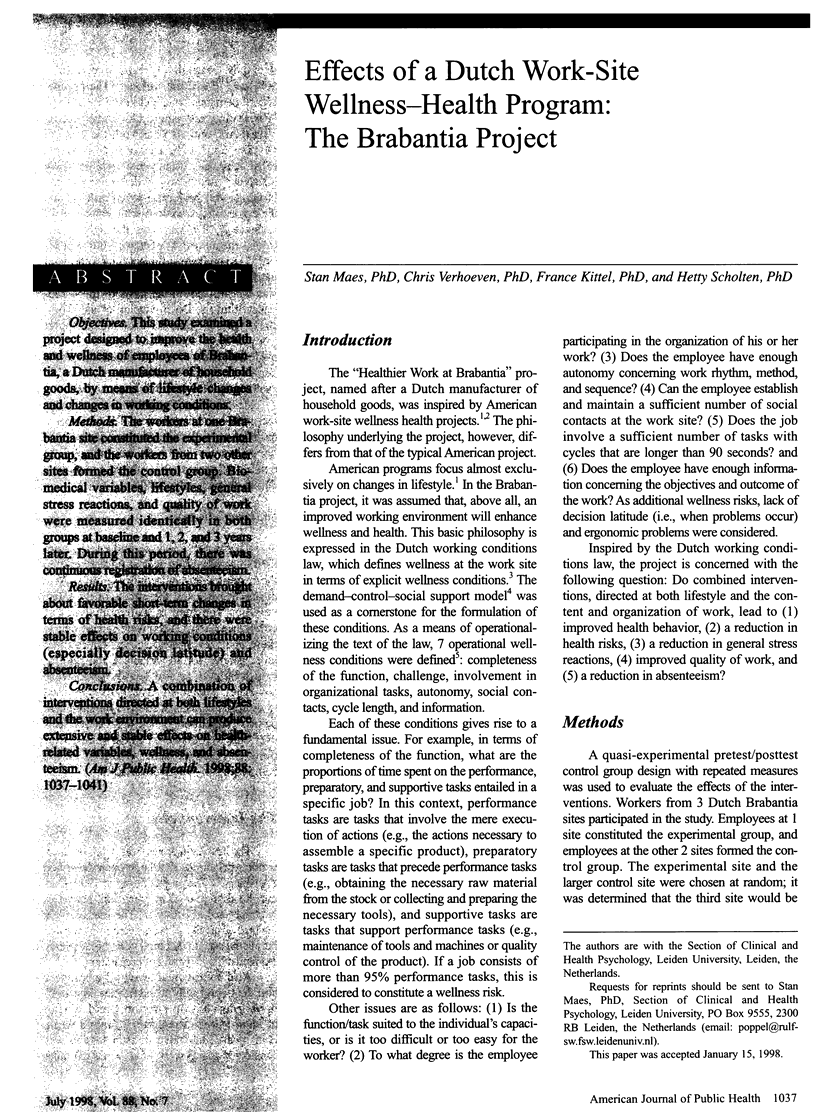
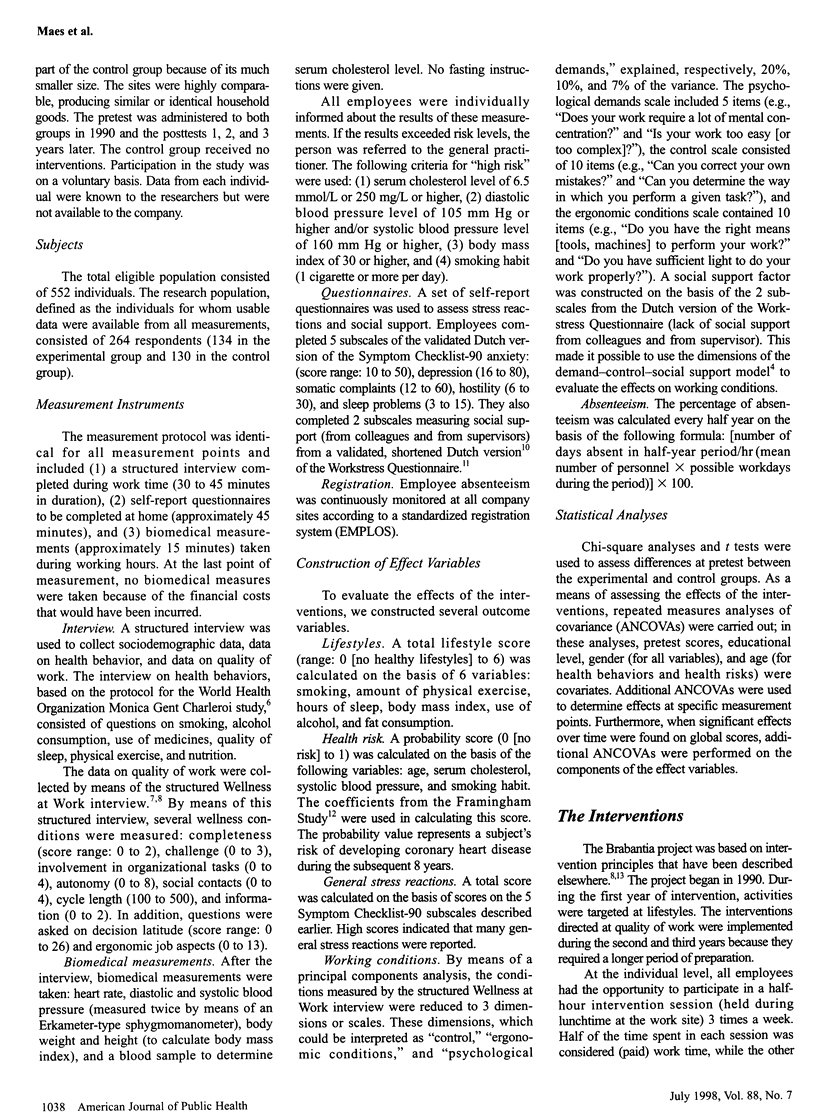
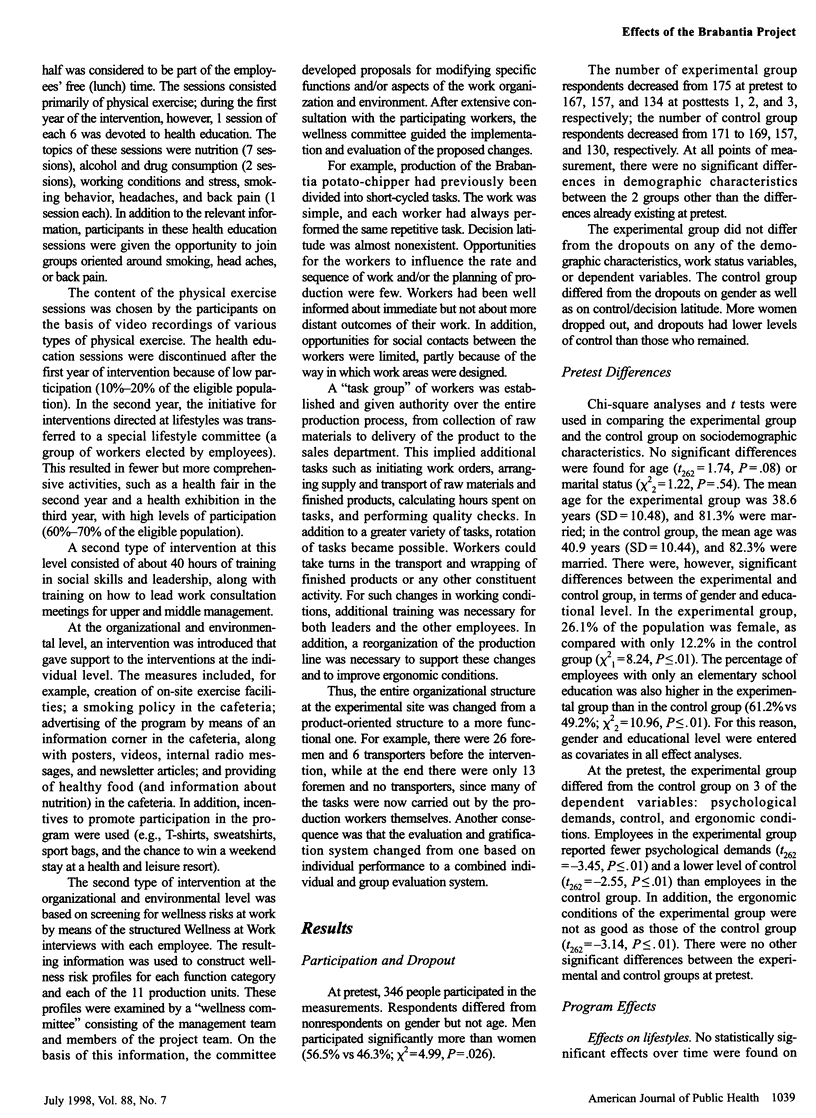
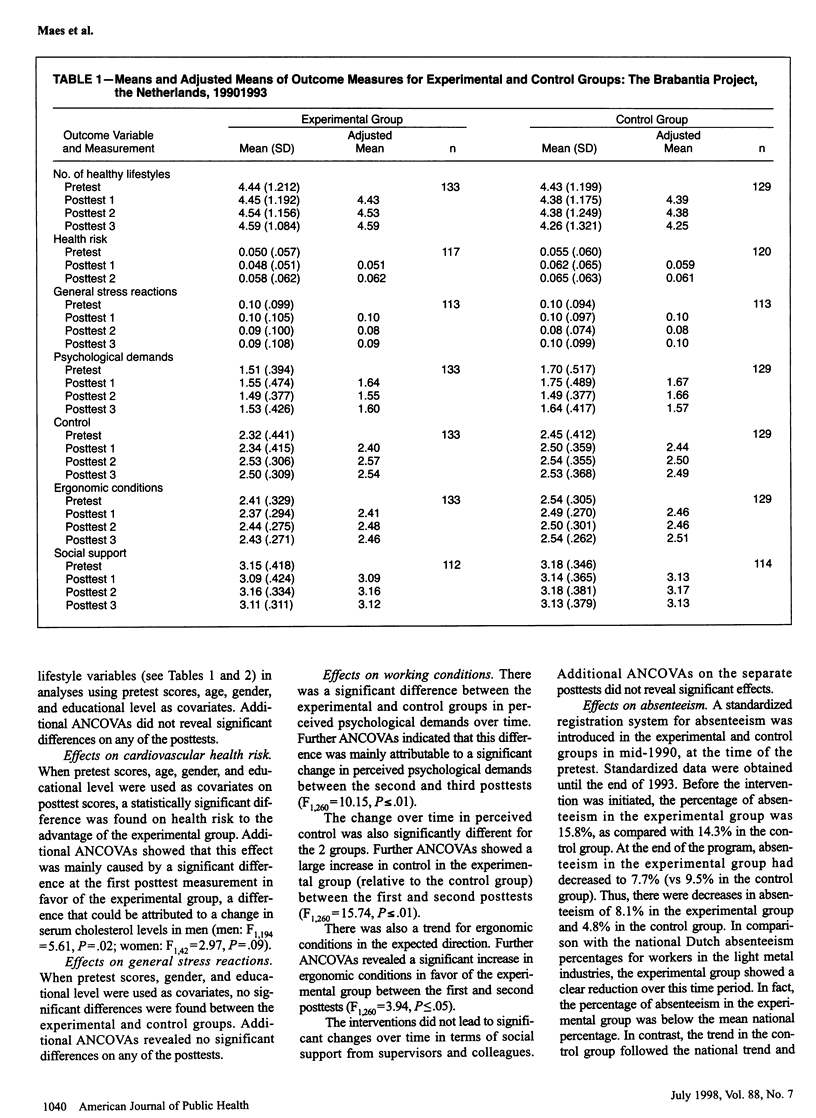
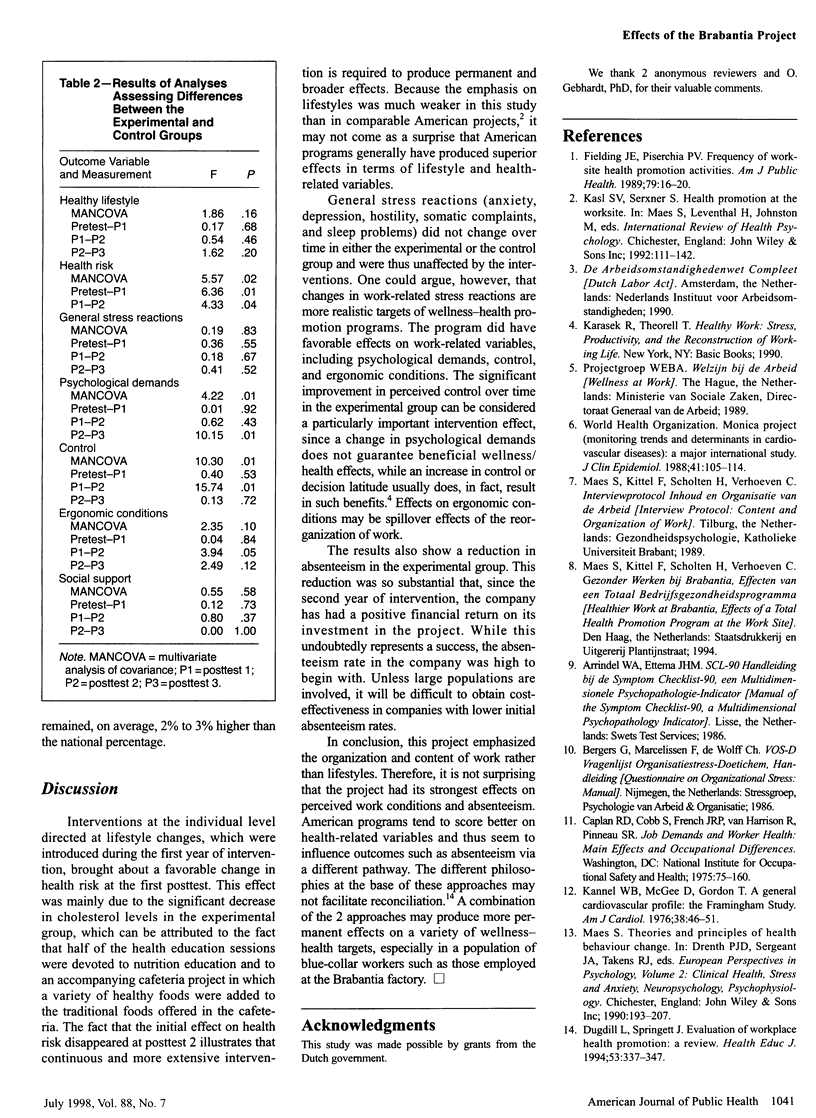
Selected References
These references are in PubMed. This may not be the complete list of references from this article.
- Fielding J. E., Piserchia P. V. Frequency of worksite health promotion activities. Am J Public Health. 1989 Jan;79(1):16–20. doi: 10.2105/ajph.79.1.16. [DOI] [PMC free article] [PubMed] [Google Scholar]
- Kannel W. B., McGee D., Gordon T. A general cardiovascular risk profile: the Framingham Study. Am J Cardiol. 1976 Jul;38(1):46–51. doi: 10.1016/0002-9149(76)90061-8. [DOI] [PubMed] [Google Scholar]


